
Today is the last day of May and our last day in Budapest; it is also the first time in our lives that I or Caroline have visited a synagogue. Not only is it our first synagogue, but it was once the largest on Earth until a copy of it that is larger was built in New York, so we are at the second-largest synagogue on our planet. Welcome to the Dohány Street Synagogue.
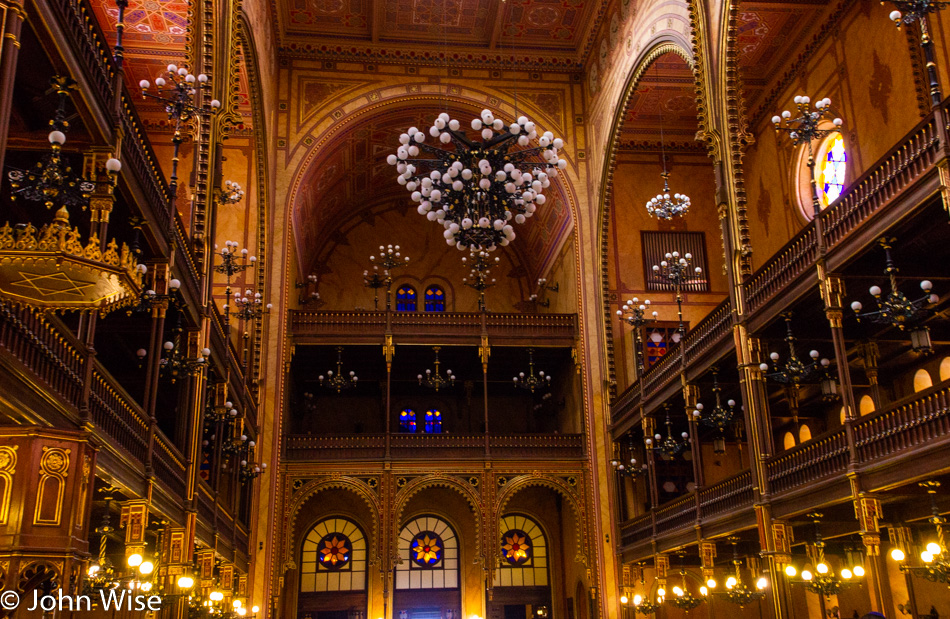
The sections of the pews are identified by individual languages that determine the tongue a tour will be conducted in. Sit down in the appropriate area and someone will come by and introduce you to the history of the synagogue, followed by a brief tour of the grounds so you better understand the role of the synagogue in Budapest and that of the Jewish people in Budapest. So one of the things you’ll learn is why the organ sits behind the Torah Ark (the altar in Christian churches) or how this synagogue differs from traditional synagogues due to Budapest’s Jewish population trying to better integrate into the community back in the 1850s. It is unusual for a synagogue to even have an organ, and famous composers Franz Liszt and Camille Saint-Saens played the original instrument that was installed in 1859 and replaced in the 1960s.
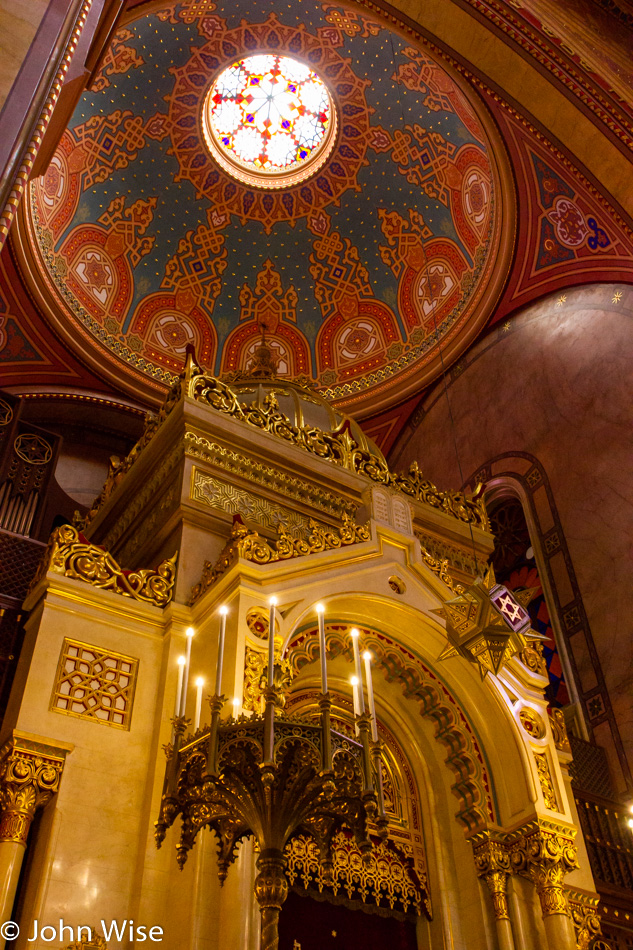
Male visitors must wear a kippah to enter the synagogue, and both sexes are expected to wear appropriate clothing (paper kippots and covers for bare shoulders are offered at the entrance). During our short visit, I don’t feel like I learned much of anything about the faith or ceremonies held here and think it would be nice to have a more detailed encounter to fill some of the gaps in my ignorance of Jewish religious practices.

I couldn’t find a great angle to get an overview of the synagogue in its entirety. This was probably due to our approach, and then by the time we were leaving, I was in too bad of an emotional situation to go hunting for a better image, so at least as far as my blog is concerned, this is the best I’ve got.
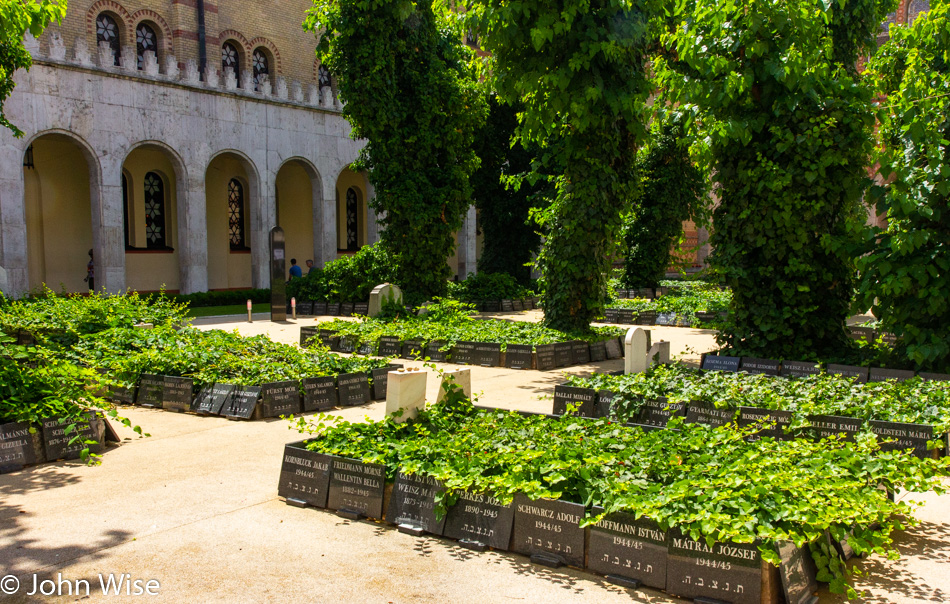
Our visit to the synagogue turned out to be a hugely emotional experience for both of us as the connectivity of people in general, and the quick trauma suffered by the Jews of Budapest was made clear, along with the living conditions of those who were able to endure. From the ghetto to the mass graves of people who witnessed firsthand the rage of intolerance, the picture painted is all too clear of where our nationalist hate-filled ugly selves can bring humanity.
I couldn’t just stand here and listen dispassionately as the stolen happiness of these people was laid bare; I wept. I am free to visit and pass through with the luxury of experiencing a fullness of life that was extinguished for 600,000 Hungarian Jews, 2,281 of them buried mostly anonymously at my feet.
Unfortunately, I will probably lose this heavy emotional burden of shame over the next hours as, once again; I’m proven to be of little consequence to the conscience of humanity, who rarely relate to the suffering of others beyond their immediate families and friends.
It’s peculiar how I’ve found these outpourings of emotions in the most beautiful and the most tragic of places on our Earth. How does one adequately convey to others what it is like to be consumed by such powerful emotions that are beyond personal suffering or from witnessing such majestic beauty that seems to be related?
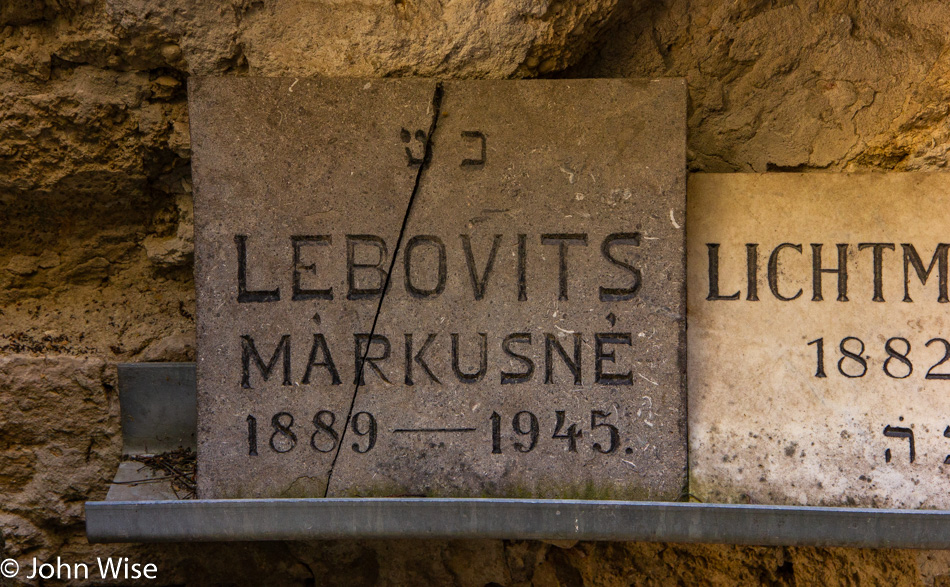
Placards in the garden commemorate the Jewish victims buried here that were identified; others who lived here and died elsewhere are memorialized by signs on the back wall.
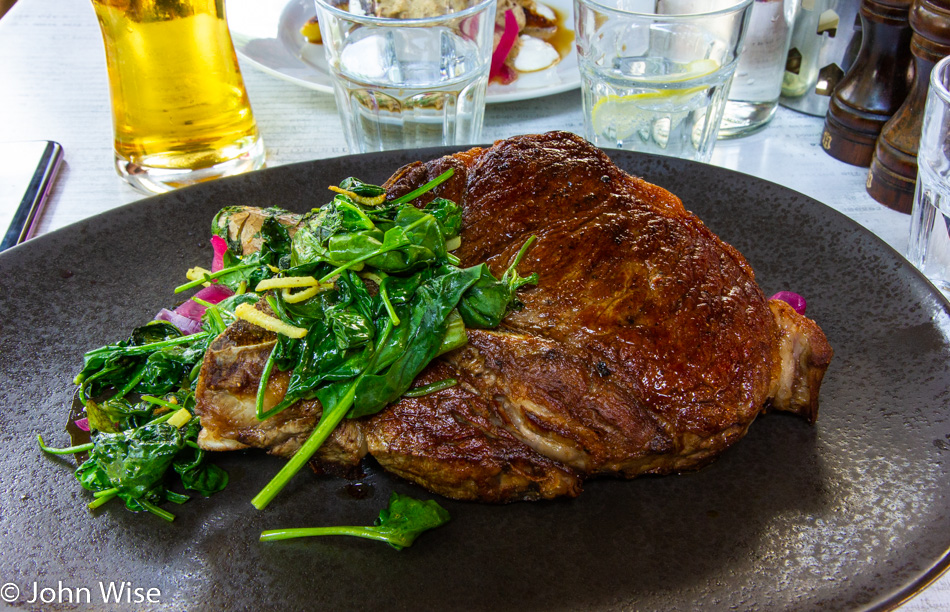
It was nearly an hour of walking around and talking about impressions and emotions before we were finally able to merge back into a state of normal. I’d read about Meatology prior to the trip, and this was a “must visit” restaurant and while we attempted to get a table last night, we were denied as they were booked solid. Upon arriving at this tiny location we understood why there are not many more than a dozen tables here. My New York Strip steak was nearly perfect though I wasn’t able to try their ribeye as the table before us bought the remaining stock. Caroline opted for rabbit for the second time on this vacation and it too was fantastic.
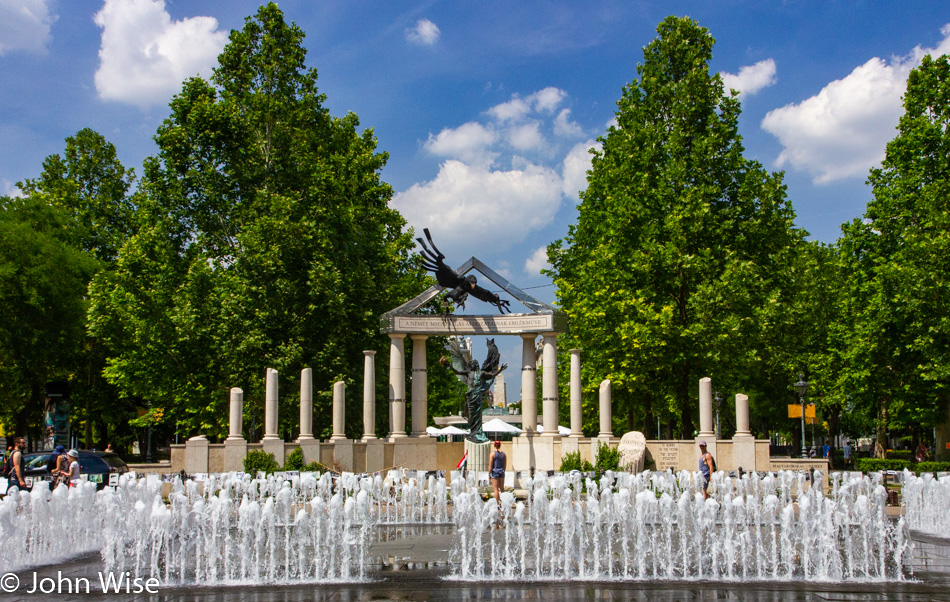
This very controversial monument was erected in the middle of the night to avoid protests from people in and out of the Jewish community who felt the portrayal absolved the Hungarian people at the time of World War II from the atrocities they willfully committed, by in some say inferring that they too were victims of the powerful Nazi regime.
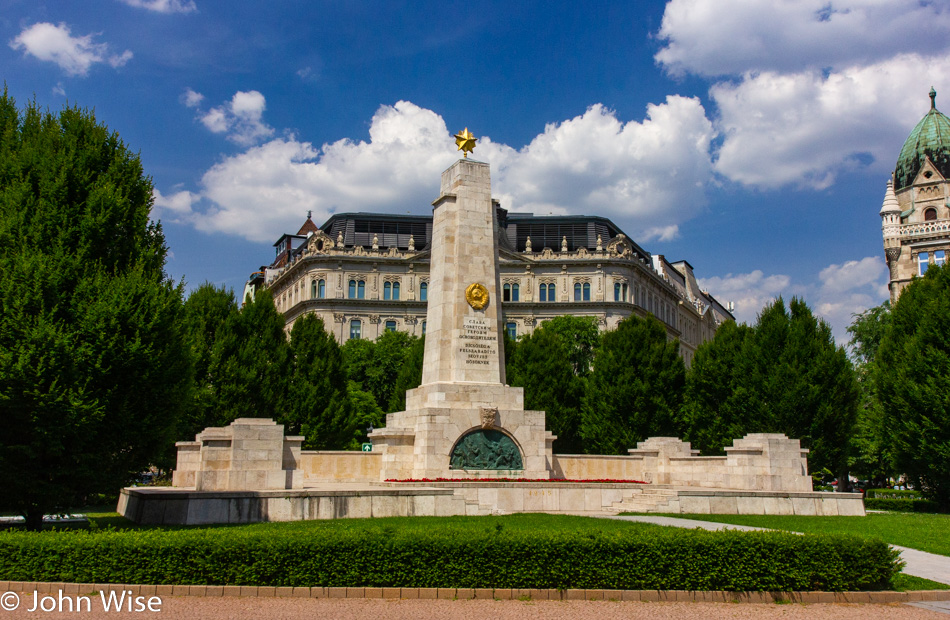
Liberty Square and the monument to the Soviet Liberation of Hungary following World War II. Ironically, it was back in 1956 that the Soviets effectively invaded Hungary to squash a revolution to oust the Marxist-Leninist government.
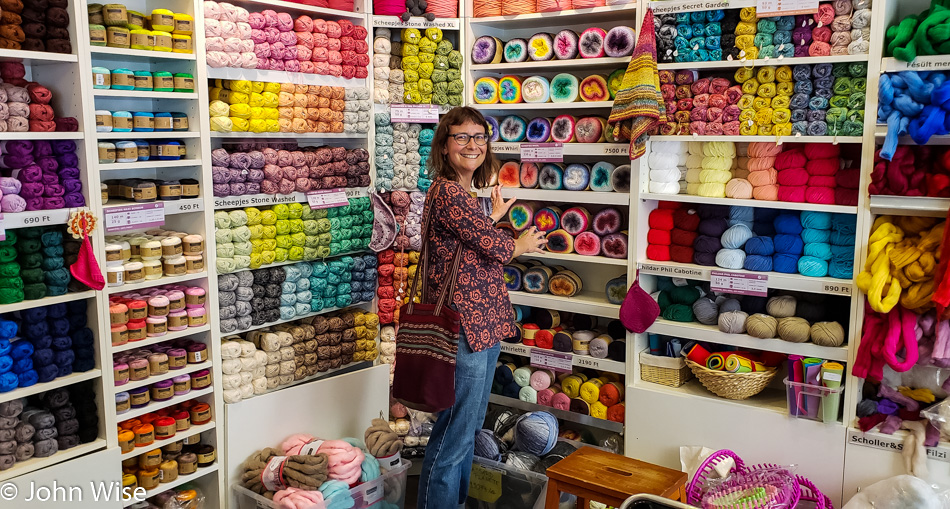
If it’s Thursday, May 31st, this must be 1001Fonal, which translates to 1001 yarns. Caroline’s main contribution to trip planning is to find the most important aspect of her desire to shop in exotic and foreign cities: the yarn store. There is no need to goad her into a big bright smile and say cheese after entering one of these shops; her excitement begins as we first get sight of the place.
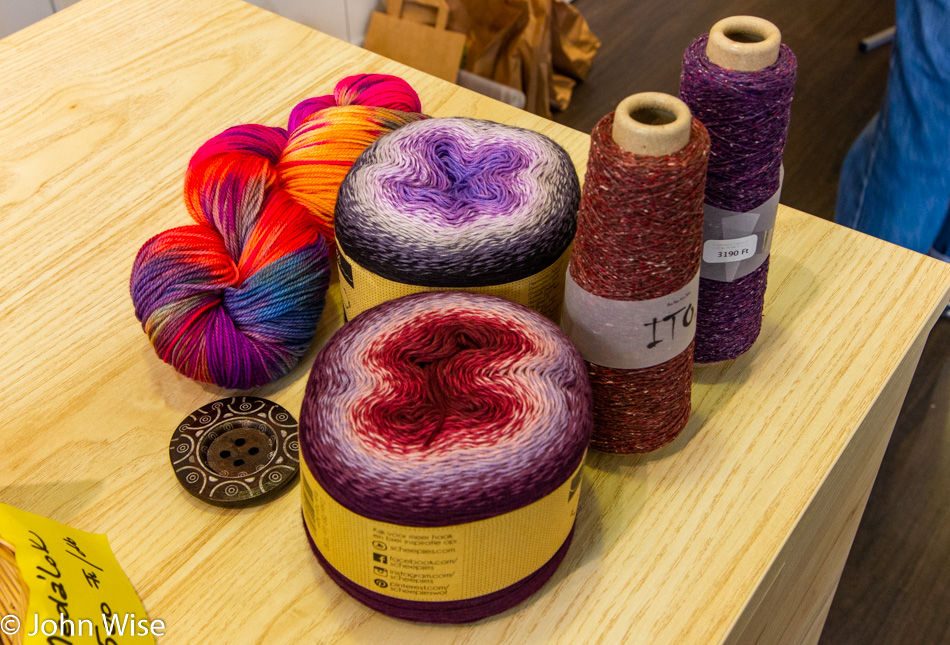
The skein of yarn on the left in purple, blue, red, orange, and pink is destined to become my Budapest socks. As for the rest of the yarn and where Caroline intends to use it, I have no idea. Maybe she’ll add a note here as she begins to tackle the effort to edit my run-on sentences, poor grammar, and stuff that even I have problems figuring out what I’d originally wanted to say when I’m putting down a flow of thought unencumbered with much critical thinking. Like just now? Just kidding, sweetheart! I only have some vague ideas about what I’m going to do with my fibery loot. Probably scarves, but whether they will be sprang braided, knitted, or woven, I can’t yet say. – C.

It’s hot and humid. We have shopped and celebrated yarn purchases and had a great lunch. Earlier, we wept and were dragged into the miasma of a dark history. It is now time for ice cream because nothing soothes the frazzled and excited traveler quite like ice cream does. We are at Levendula Kézműves Fagylaltozó, which translates into Lavender Artisan Ice Cream, believe it or not. You should ask me what’s in that cup. Well, I’ll tell you, it’s sour cherry and sea buckthorn, strawberry ginger, and Tokaji Aszu wine flavor
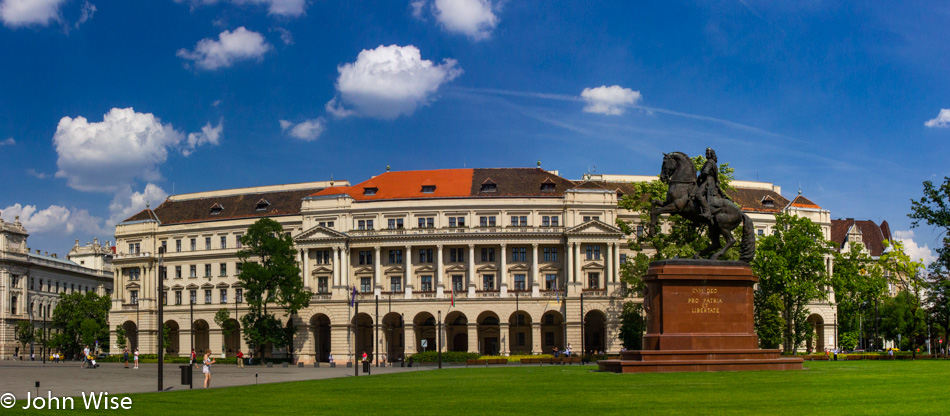
This statue of Ferenc Rákóczi stands in Kossuth Lajos Square near Parliament. As the Prince of the Estates Confederated for Liberty of the Kingdom of Hungary, Ferenc fought for a war of national liberation from the Habsburgs and is considered a hero here in Hungary. The article over at Wikipedia about him is quite interesting should you be interested.

Shoes on the Danube Bank is a memorial for the people who were shot on the banks of the Danube by Arrow Cross fascists during World War II. Victims were brought to the river’s edge in the winter of 1944-45, told to take off their shoes and turn to face their executioner. They were then shot and fell or were thrown into the ice-cold waters of the Danube and carried away. Thousands of mostly Jewish Hungarians met their fate here. There are about 30 pairs of iron shoes, all different and worn-looking, anchored to the river bank. Some have been adorned with ribbons; there are some candles. While this is a popular memorial to photograph and many people are around us, our minds are immediately drawn back into the grief we felt earlier, and we spend a few minutes catching up to return to the day.
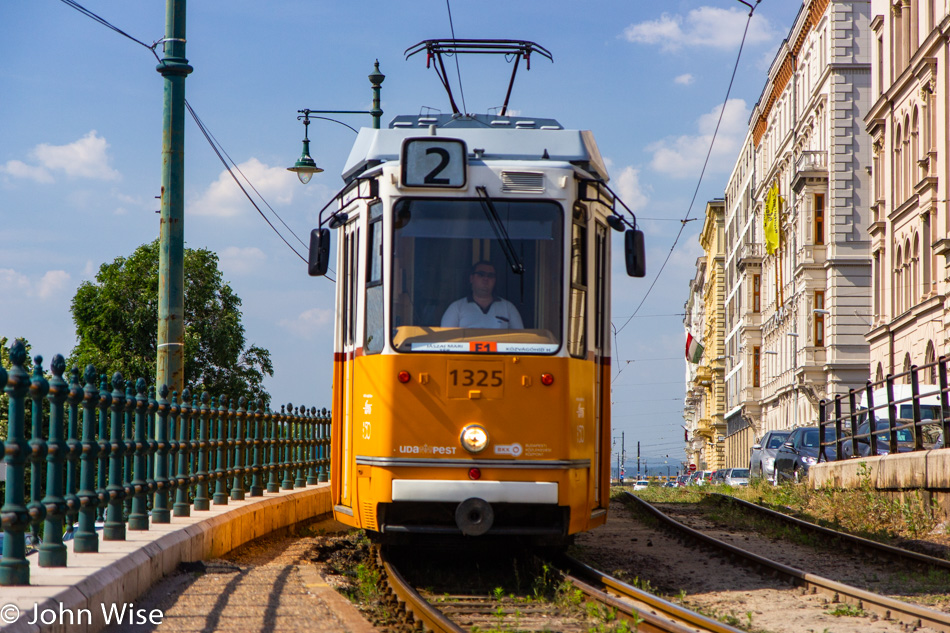
Was this the tram we took to our next stop? No, but a tram, any tram, should have been an option because before the day is done, our feet will be finished. Instead, we continued our walking adventure so we’d have maximum flexibility to stop, look, learn, or taste our way through Budapest.

We’re at the Central Market Hall, where one would expect to find an abundance of paprika as Hungary is well known for it. The Central Market opened back in 1897, but by 1991 needed some major renovations that were completed by 1994 and took the market back to its pre-World War II glory.
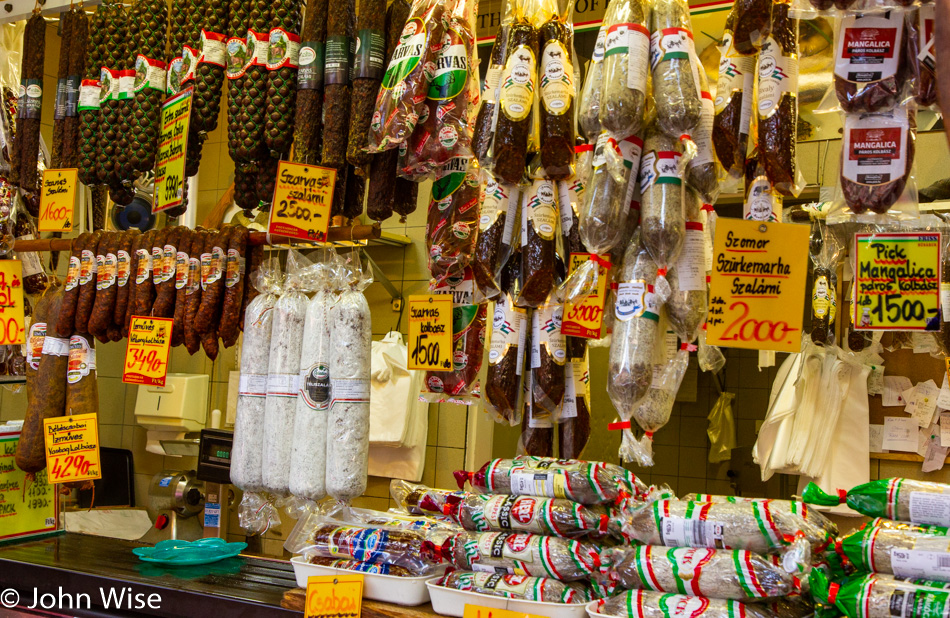
Next to paprika, there is more smoked meat and sausage in the market than someone could consume in a year. The variety of all goods, including a shop that specializes in various fruit strudels, is fantastic. If we lived in Budapest, I would be a daily customer. How I wish we Americans had a greater demand for quality food than the low-quality, high-calorie crap that is mostly on offer across our land. Sure, there are pockets of connoisseurs, but those are mostly among high-earners who’ve acquired a taste for the finer things in life.
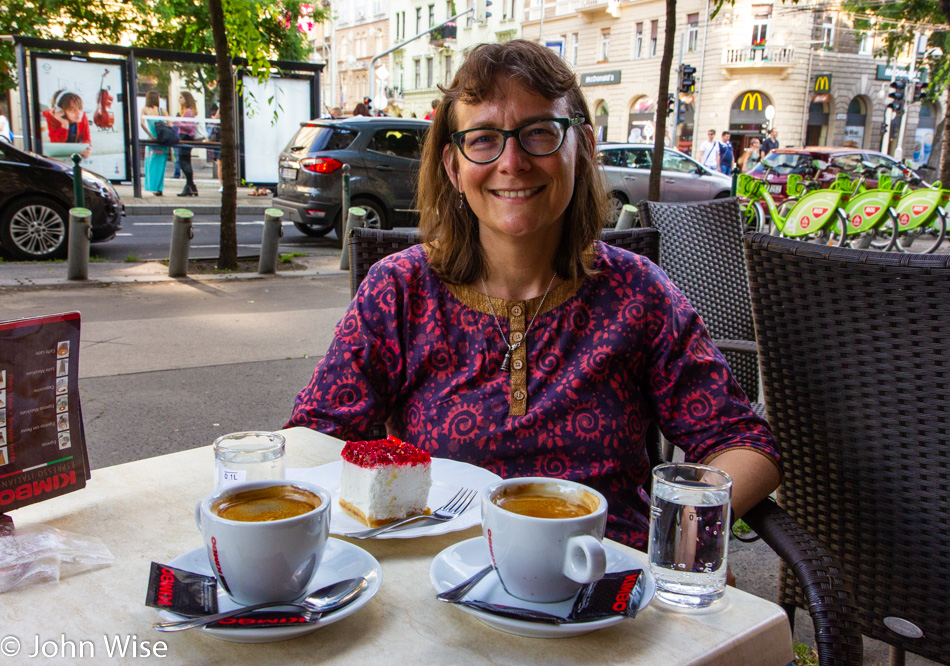
We are on vacation, and a mid-afternoon treat and coffee feel absolutely normal. Hopefully, with all this walking we are also working some of our calories off. In any case, there will be enough time when we get home to deal with any lingering guilt of gluttony.
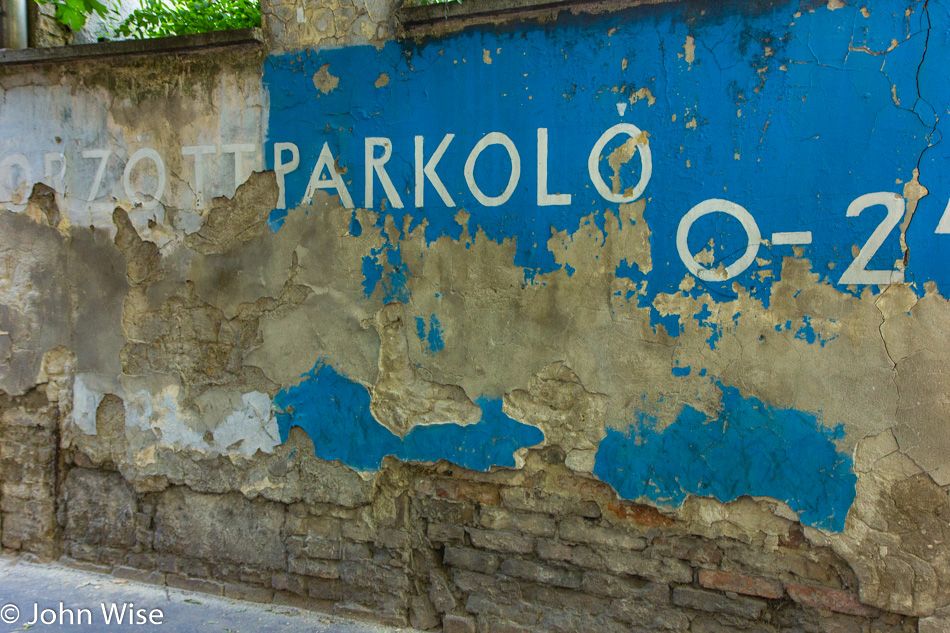
Out of the central part of Budapest, we are heading to a local graveyard.
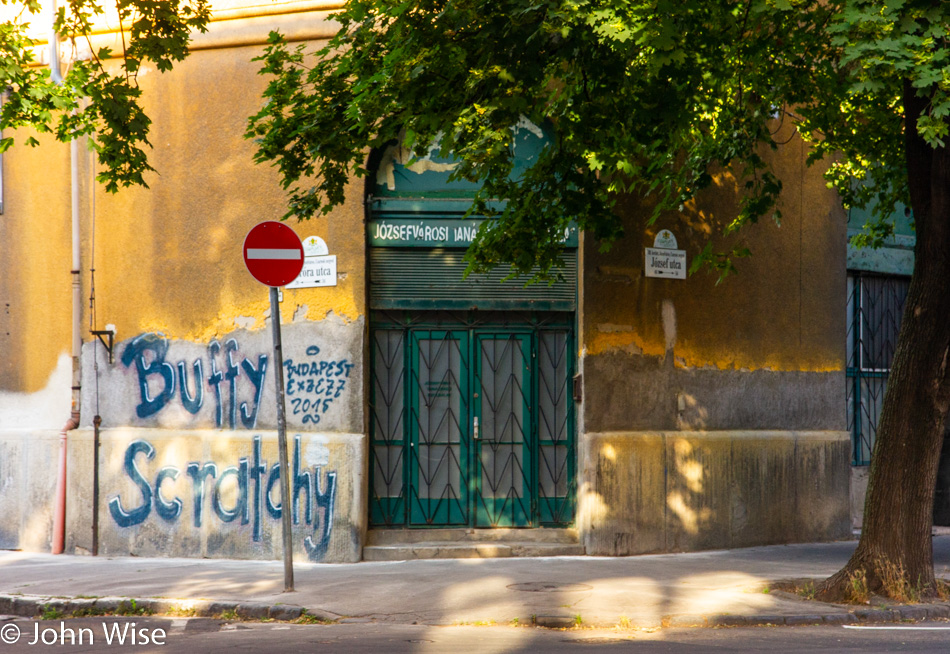
There’s no particular grave we are interested in. After all of the hustle and bustle of crowded shopping districts, some peace and quiet in a lush setting sounded appealing.
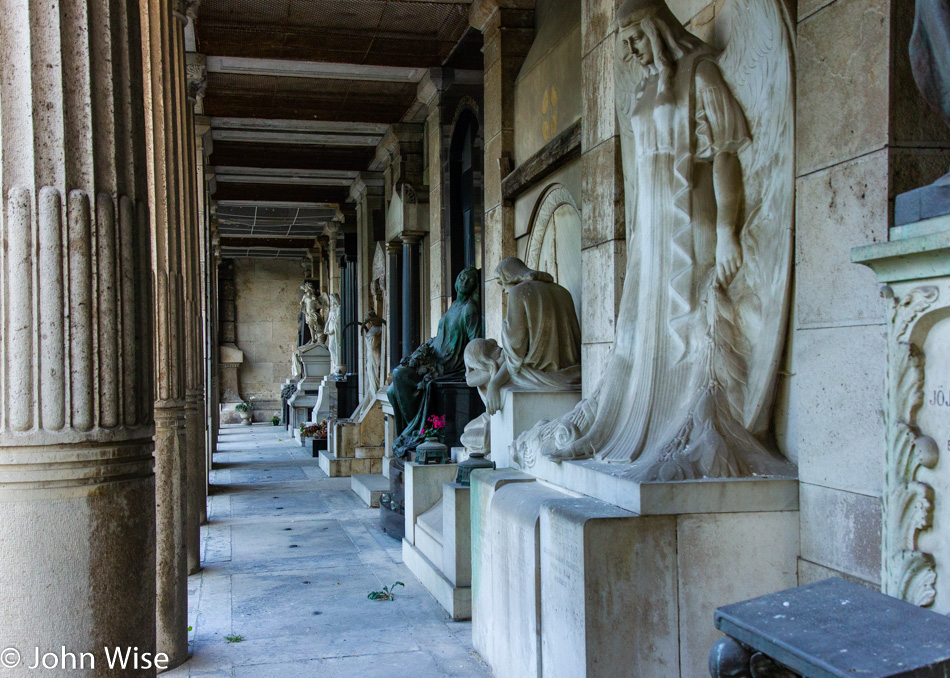
We arrived at the Fiume Road Cemetery after searching for the only entrance we could find.
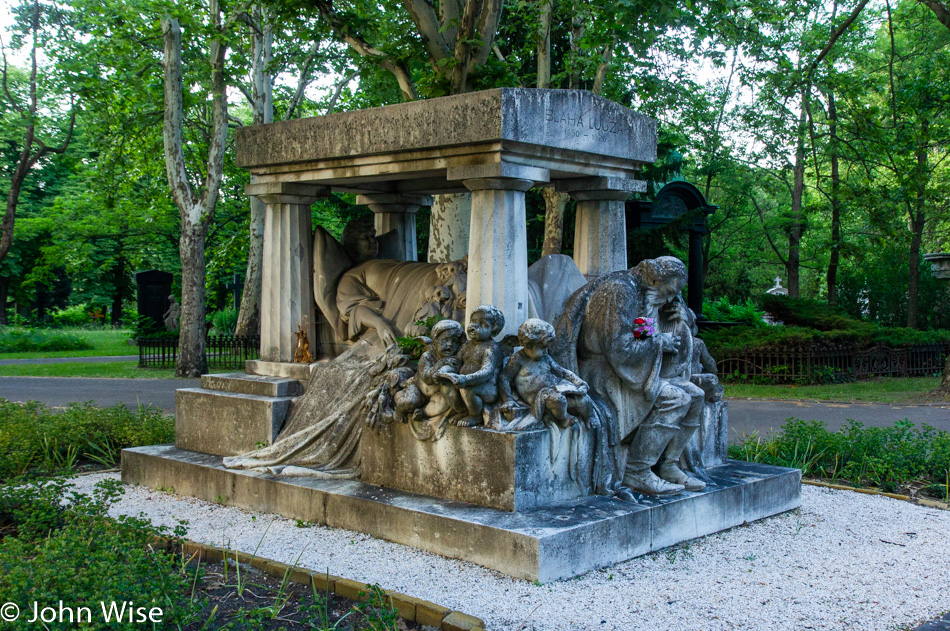
From Marilyn Monroe in California to the Kennedys in Arlington and various cemeteries around northern Europe, this is the furthest east I’ve traveled to visit a graveyard. The Fiume Road Cemetery shows up on a number of people’s recommendations as a place to visit in Budapest, so I put it on the list in case we had time. Obviously, we did.
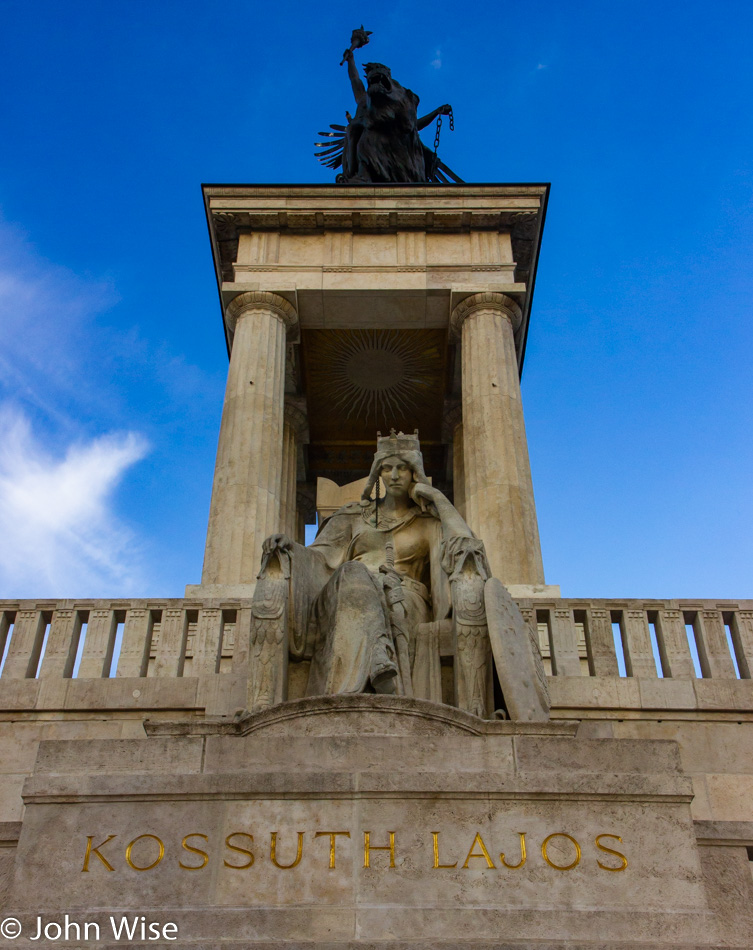
A monumental tribute to Lajos Kossuth, who was Governor-President of the Kingdom of Hungary during the 1848 revolution against the Habsburgs. If this rings a bell, it was earlier in the day that we were passing a statue of Ferenc Rákóczi who also played a large role in the revolution.
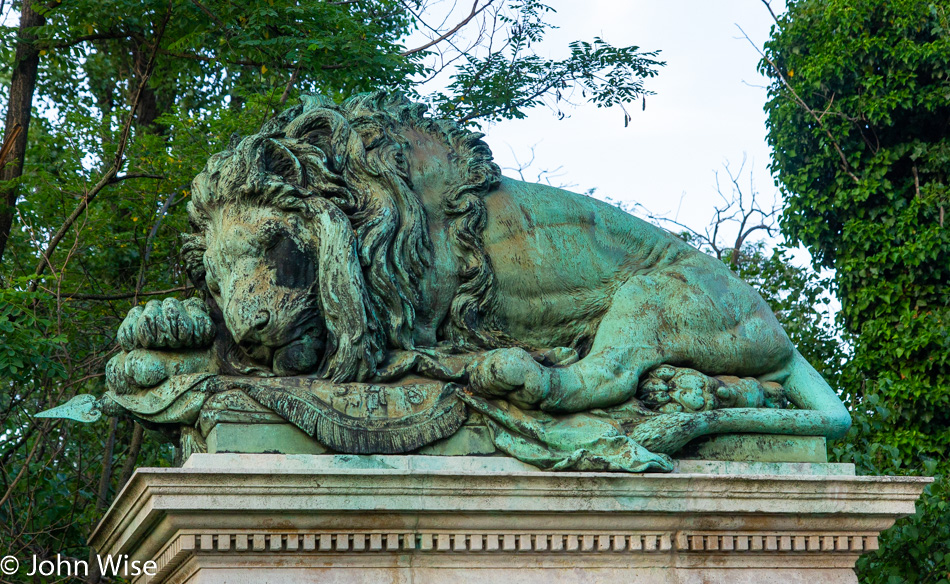
With only 90 minutes to explore the cemetery before they locked the gate, we did not have enough time to visit much more than a small fraction of this tranquil location set within the expanse of Budapest. There’s a lot of historical references here that neither Caroline nor I have a clue about. So I’ll wonder out loud here, “What is the Hungarian fascination with lions?” – I’m going to wager that lions, as kings of beasts, represent majesty and power. The internet also says that lions used to be on the crest of Hungarian kings. C.
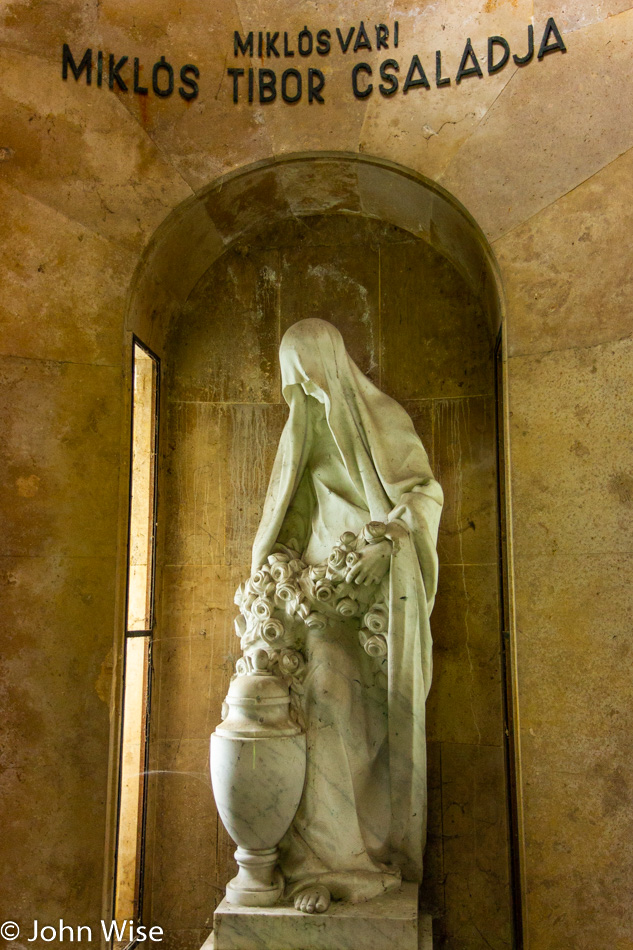
A small unkempt mausoleum holds the remains of this person named Miklós, maybe two people, as the name shows up twice, but I don’t know. Whomever this was, they warranted a beautiful, if neglected, final resting place in the heart of Budapest.

The sun was getting pretty low in the sky as we found the exit and headed in another direction from which we came to potentially see something we’d not seen on the way to this side of town.
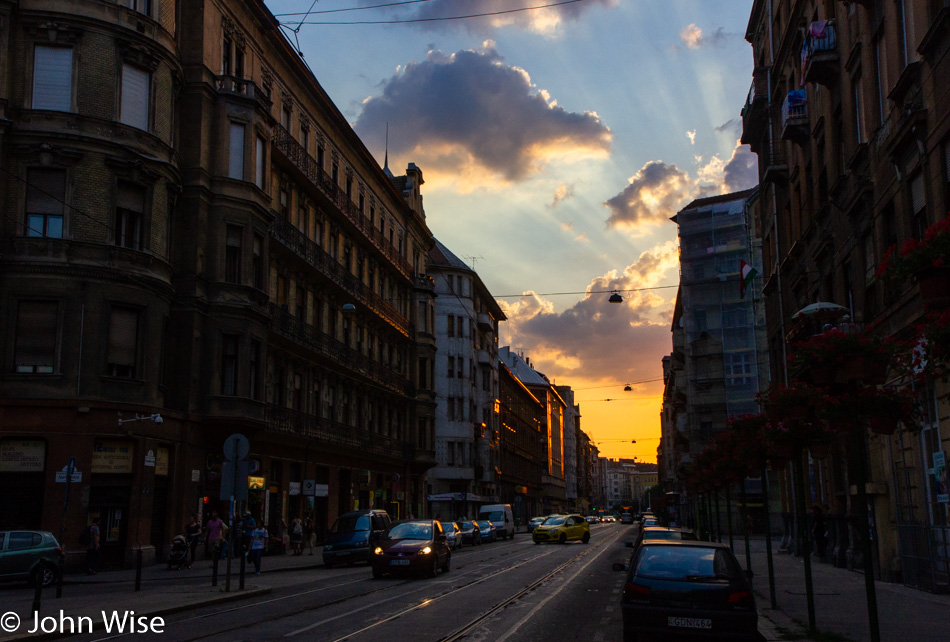
Getting closer to the main downtown district, we started looking for something to eat that wouldn’t have us walking across the city looking for that perfect meal. We were tired and ready to call it quits for the day.
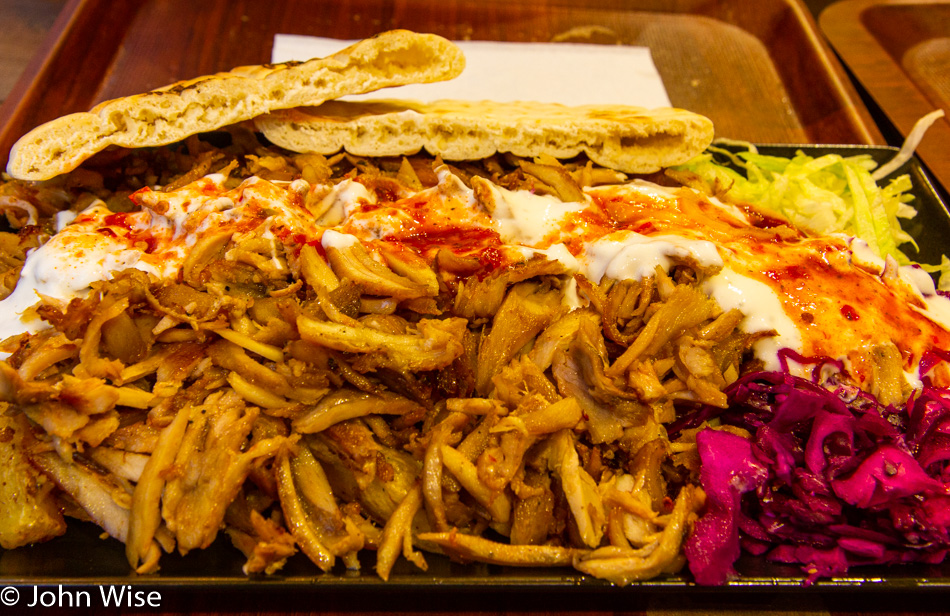
There it was dragging us into the small shop where I was delivered the largest plate of döner Kabab I’ve ever had. Caroline opted for falafel, and once we were done, we hobbled back to our apartment, satisfied that with the time we had allocated to seeing Budapest, we had done all we could and were happy with our stay. Tomorrow we drive to one of the main seats of power of the House of Habsburg and will learn more about their large role in the Holy Roman Empire.